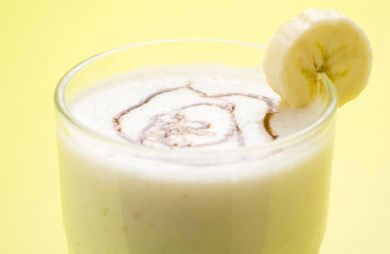By TONKA14,
SparkPeople Blogger
7/5/2010
Recently we enjoyed a long reunion weekend in Gatlinburg, Tennessee with my extended family. The home-style cooking and family-style meal service at many of the restaurants we visited made wise meal choices and portion control a challenge. At several meals, I selected a skewer entrée, which caught my son's attention. After the second time ordering them, he asked what my sudden interest was with "food on a stick." Sounds like a typical teenage question doesn't it. I informed him it was a great way for me to control my entrée portion size while also getting some grilled vegetables. Kebabs have become very common in Western countries. On American menus, they may simply be called skewers or shish kebab, which is skewer of grilled meat. Kebabs are prepared in most Middle Eastern countries but are not always prepared on a skewer or consist of cubed meat and vegetables. There are several different spellings commonly used as well.
You can select a variety of skewers and the type you pick does make a difference. Flat stainless steel skewers hold food well but transfer heat and cold differently than a wooden skewer. Recipes may suggest one over the other based on whether the foods will be cooked or chilled, are more solid or prone to spin. Skewer kebabs can be prepared hot with lean cuts of beef, pork, chicken, fish, seafood, or tofu and vegetables. They can also be prepared cold with a variety of raw fruits, vegetables or cheeses for a "no cooking necessary" meal option or as a edible decorative centerpiece for a party. Here are a few things to keep in mind as you prepare skewer kebabs this summer.
- When making cooked skewer kebabs be sure to select foods with common cooking times. Mixing a fast cooking prawn with a large piece of slower cooking chicken could make it a challenge for both to receive the cooking time needed to produce a great tasting finished product. It is also best to use different size vegetables and fruit pieces depending on what they will be paired with on the skewer. When using faster cooking items like tofu or seafood, cut vegetables smaller so they cook quicker. When pairing with longer cooking meats like pork or chicken, use larger chunk vegetable sizes so they will not be overcooked. Allow a little space between each item as you prepare skewers to assist with even cooking time.
- When using metal skewers apply a light coating of cooking oil or cooking spray before threading foods to ensure they will come off with ease. When planning to grill using wooden skewers, soak them in cold water at least twenty minutes before you plan to thread and cook. Moisture prevents the wood from catching fire and scorching your food. You may also want to use a light coating of oil or cooking spray on wooden skewers depending on the type of wood skewer you select. Regardless of the type of skewer, cook over medium or medium-high heat to be sure the interior of your food is cooked appropriately while fully caramelizing the exterior without overly searing or charring.
- Marinades are frequently used to enhance seasoning or assist with meat tenderization. For tougher cuts of meat like lamb, allow several hours to marinate before skewing so the marinade can fully penetration and tenderize the meat. Softer meats like seafood require only a short thirty minutes to season since they typically don't need to be tenderized. For meats that do not need tenderizing, consider brushing the sauce on lightly during cooking to reduce the calories contributed by the marinade. You can lightly brush kebabs with sauce again before serving to give them a fresh sheen. Skipping this last step and making sauce available allows people to use as much or as little as they like which also helps keep sauce calorie contribution down.
- When making raw fruit, vegetable or cheese skewers, the size of the chunk should depend on how soft the food item. To be sure a banana stays on the skewer it may need to be a larger size than a chunk of pineapple. Remember that some fruits begin to change color once peeled and cut. Dip fruits like pears, apples, or bananas in lemon juice before threading on the skewer to prevent browning. You can experiment with colors, tastes, and textures when combining raw fruits and vegetables with other items such as natural cheeses, sun dried tomatoes, angel food cake or marshmallows. While fruits dipped in chocolate and dipping sauces served on the side can enhance cold skewer presentation and taste, use them sparingly to keep the calories and fat they contribute to a minimum.
Here are some healthy skewer kebob recipes to try at your next family cookout or group gathering.
Grilled Shrimp Skewers
Mushroom and Eggplant Skewers
Caprese Skewers
Mango Chicken Skewers
Chef Meg Approved Fruit Kebabs with Coconut Yogurt
Quick Cantaloupe Skewers
Do you make skewer kebobs? What are some of your favorite creations?
|
|

.jpg)

.jpg)







.jpg)



